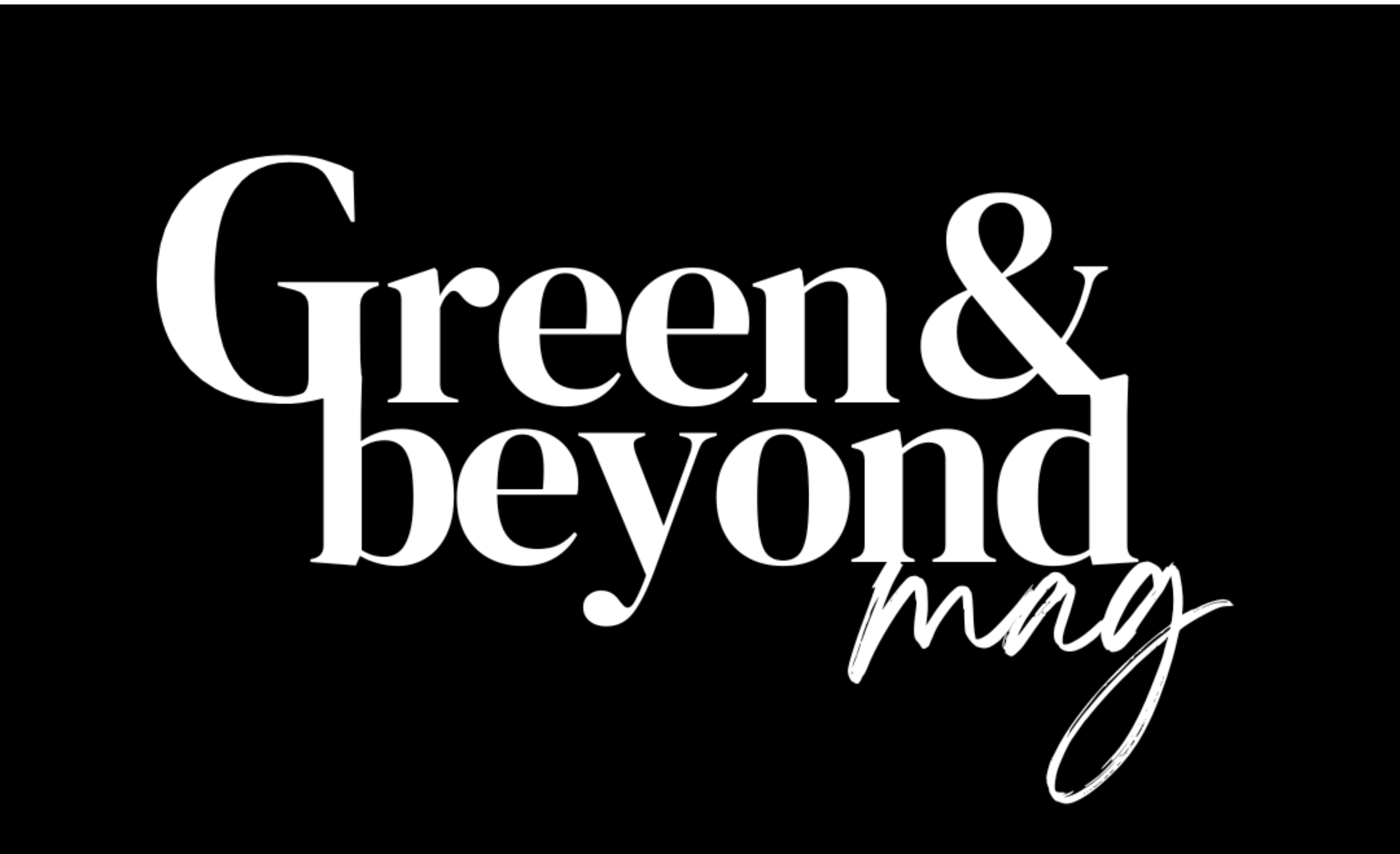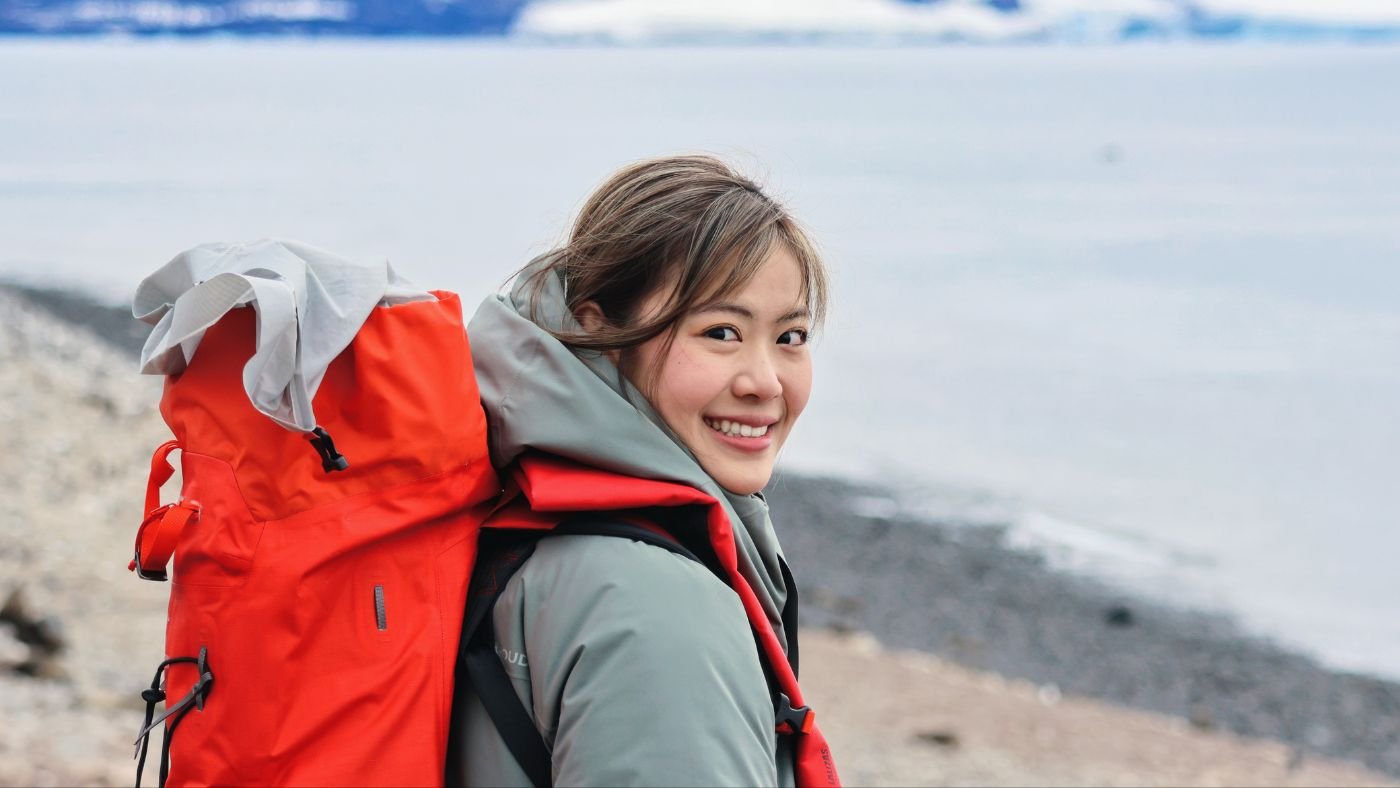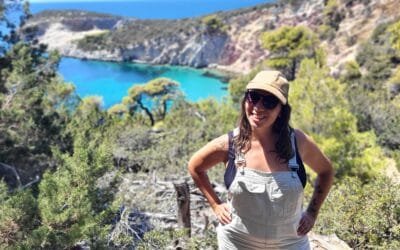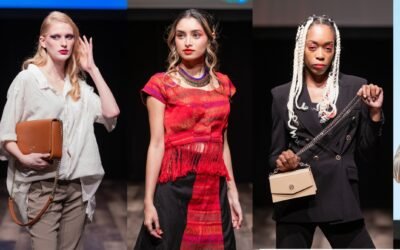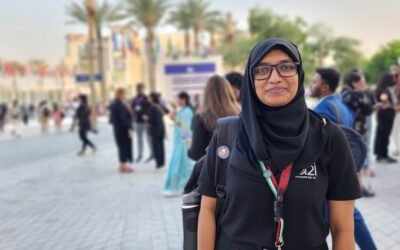Natalie Chung, a young and dynamic social entrepreneur and sustainability leader from Hong Kong, has returned from the Dr Sylvia Earle Antarctic Climate Expedition 2023, alongside the legendary oceanographer and environmentalist, Dr Sylvia Earle. As the only representative from her country, Natalie had a rare opportunity to explore one of the most remote and fragile ecosystems on earth, while also witnessing the devastating effects of climate change on this pristine environment.
In our previous interview, we shared Natalie’s excitement and anticipation for her journey to the end of the world, and now, we’re thrilled to present a captivating and exclusive glimpse into her post-expedition experience. Join us as we dive deep into Natalie’s thrilling journey to Antarctica – from breathtaking vistas to heart-stopping adventures, we’ve got all the details. But that’s not all; we’ll also delve into the remarkable insights she gained, and how her experience has shaped her work as a sustainability leader. Natalie’s incredible journey to Antarctica is not only a testament to her unwavering passion for environmentalism but also a shining example of her commitment to creating a better world for all. So, sit back, relax, and indulge in this inspiring and empowering interview with the unstoppable Natalie Chung – a true visionary and trailblazer in the world of sustainability.
Tell me about how your 9-day Voyage went.
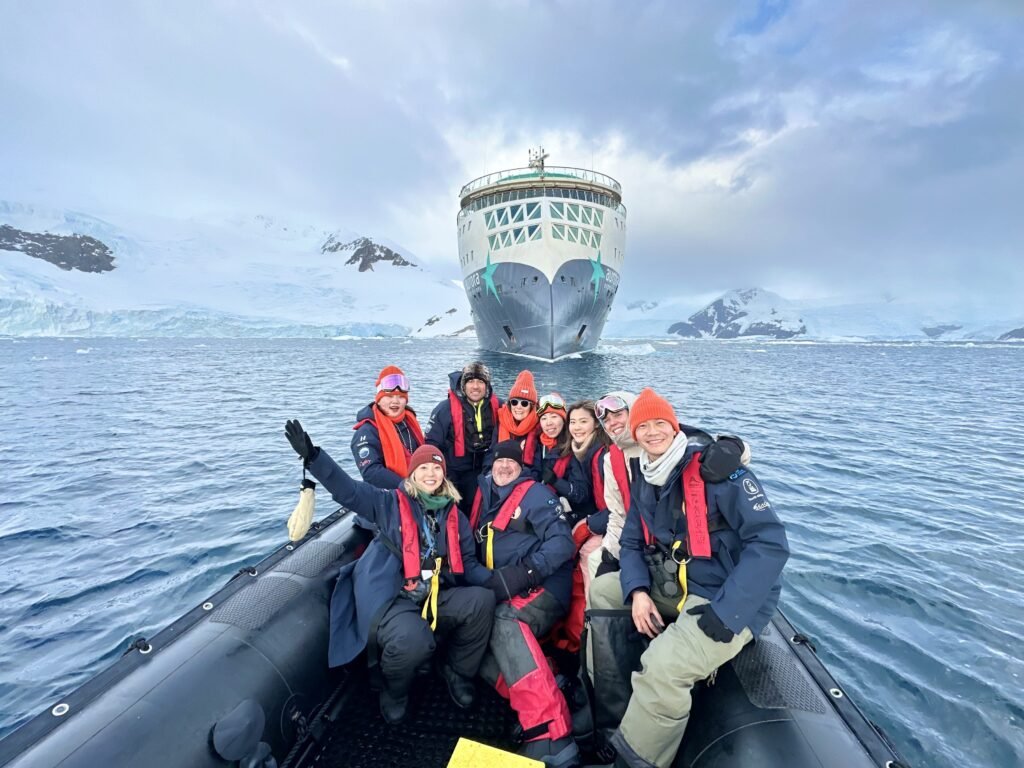
First of all, it extended from nine days to around 12 days due to the changing climate, because it was very difficult for us to take a flight from the South Georgia Island of Antarctica back to Chile, the mainland. So we were kind of stuck on the ship for three extra days. It was a very special experience but it also allowed us to kind of realize how insignificant mankind is when compared with the ever-changing climate and the force of nature. Some of the people on the ship were very influential policymakers and experts but none of us could or ever can overcome these kinds of natural conditions. So it’s a reminder to us how insignificant we can be and how much we should pay respect to nature as we’re all part of the system.
So I think the whole of the voyage was very fruitful. We had 110 experts joining from different backgrounds over 19 countries and regions and the ages ranged from 12 to 88. The oldest person is Dr. Sylvia Earle, who’s 88 years old. It was such a great pleasure and inspiring experience to meet Sylvia in person and to spend almost 12 days together with her. We had a few meals with her as well, and she shared with us how she feels about the ocean, her life journey, and her ambitions.
The journey started with us, all being in Ushuaia, gathering before we set sail to Antarctica. There, we had a full-day conference to discuss, initially, the 23 resolutions for 2023 to accelerate Net Zero by 2035. In the meeting, we were divided into different groups. And each group focused on a specific topic – my group focused on plastic. We had some plastic experts such as Joanna Ruxton, she’s the producer and filmmaker of A Plastic Ocean, a very famous documentary on Netflix about microplastic and the whole plastic life cycle in the ocean. There was also Esther An who is the Chief Sustainability Officer of CDL, one of the major property developers in Singapore. So it was a very comprehensive and fruitful dialogue, where we got to pinpoint which of those resolutions was the most important because we had this previous conversation in which we already developed a rough list of resolutions.
The purpose of the expedition was to nail it down further with everyone’s input. Some points were raised such as how we should focus on the entire circular economy instead of just talking about ocean plastic as the production and manufacturing of plastic can also infer how we produce other products using a life cycle approach. So we believe that embracing a circular economy is a key resolution for protecting the ocean. Given that, a lot of consumer products may draw resources from the seabed or sea floor, it is important to install that mindset of sustainable consumption – the consumption behavior shifts to include in the resolution.
On the second day, we boarded the Dr. Sylvia Earle ship, it was a very unique experience because it was the first time for the ship to sail too. So we had this christening ceremony of the ship to celebrate a good start of the journey but it was postponed due to weather again. We also started the day with a lot of lectures about understanding the sustainable tourism conventions of Antarctica. This was unique to me because when speaking with some of the expedition guides on the ship, we understood that Antarctica has one of the most stringent sustainable tourism rules around the world. So it’s governed by an agency called IAATO and they have a set of guidelines on what tourists can or cannot do, and researchers can do on the grounds. For instance, for Penguins, we need to keep a distance of five meters, and then for whales, I think it was 15 meters – on a boat. So I think it’s a great reference for how to do tourism – ecotourism around the world, especially in regions with high ecological sensitivity.
One main point that they mentioned is how one virus can even lead to the dying out of the whole penguin colony. Because when we’re doing the continental endings, we will be seeing maybe 10,000 penguins all at once. And these penguins have not developed the immunity against foreign diseases that we may bring to them. So it’s very important for us to keep these diseases out of reach of the species there. Because Antarctica is the only place on earth, the Last Frontier, where no humans happen to inhabit and we need to keep preserving, then observing these rules to ensure their safety.
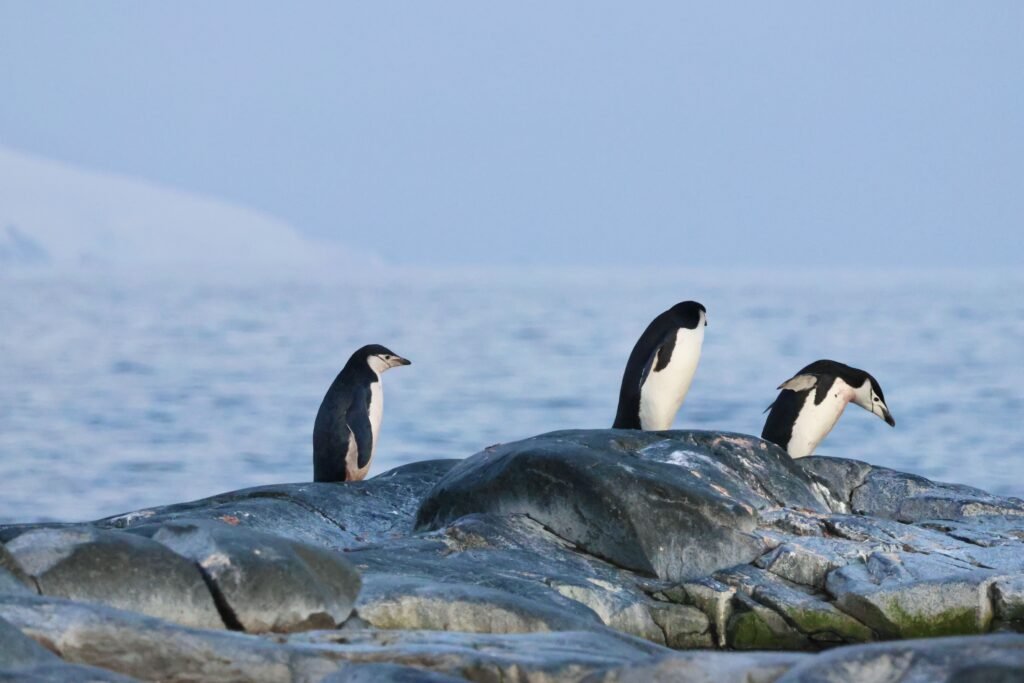
And so before we do all the landings, we have to change into the proper disinfectant boots provided by the ship and we step into a sanitizing liquid to disinfect everything – not just the boots, but also the tip of, for example, your hiking pole, you need to dip the tip into it as well. We also needed to step into it again before going into the ship. So it’s like a safety protocol. And before everyone goes down we also need to do a very special vacuuming process which I didn’t know it’s so important. So basically, it’s because we don’t want to bring any exotic species or invasive species into Antarctica. So we need to use the normal vacuum to vacuum all our clothes and bags – everything that’s exterior that we are wearing and bringing with us – because we don’t want to bring any tiny seed that probably got stuck onto our clothes and drop it there. So, just to ensure that we’re not bringing any exotic species into there.
I think I’ve learned quite a lot from these. We were taught to respect all lives in nature in this very unique part of the world. So, yeah, on the second day, we did the first landing, which was approximately at 4 A.M. It was a very surreal experience because we woke up so early and everyone was very tired but it was all worth it. Because we saw the sunrise and it was the perfect sunlight to see the Penguins. The first species we saw is the Chinstrap Penguin. We saw three species of penguins out of a total of seven in Antarctica. Chinstrap penguins have a line of their chins, so they’re called Chinstraps. They are abundant but their numbers have been decreasing because the majority of them feed on Antarctic krills, a type of very small shrimp that have declined by 80% over the past 40 – 50 years. The main reason is that they’re sensitive to water temperature, and warming oceans lead to the dying out of these shrimps and also overfishing. So it’s very astonishing to know how important krill is to the entire Antarctic ecosystem.

One of the resolutions also focuses on protecting the krills. Because apart from penguins, seals and whales also consume krill as the basis of the food chain. For example, a typical whale consumes four tons of krill per day to survive. So, it’s a massive amount of krills. So I think it’s interesting how this small creature is playing such an important role in the ecosystem system and ignorance of protecting them in the past has led to disasters. I think a lot of the products, for example, Salmon sold in Europe used to be fat on krill because we used to think that krills were very abundant and we allowed for krill farming in Antarctica – when there were no ocean treaties governing them.
But since the countries have signed the Antarctic treaty to protect Antarctica, it has improved a bit but we still need to raise awareness around it to stop purchasing any krill-based products because there are products like krill oil – like essential oils, that are extracted from krills. Also fish products, fat of krills. But they may not be explicitly stated on the product. So maybe when you’re buying it, you don’t know that it’s from Antarctica and you don’t know how detrimental the impact can be on their ecosystem. So that’s one major lesson I learned from this whole penguin and krill ecosystem.
In the next few days, we also did more landings on different parts of Antarctica. I joined the microplastic team. So we collected water samples from the surface. And on the ship, because this is a new ship that celebrates scientific research and exploration, we have a special laboratory dedicated to Dr. Sylvia Earle that’s equipped with some simple gadgets, like electronic microscopes. So we were able to analyze the microscopic samples to find out whether there was any plastic in them. And indeed, we saw a lot of microplastic in the samples. In all 10 samples, we found traces of microplastic, which was bad, but also sort of expected because there is human intervention. We found some small red filaments which are supposedly from the clothes that people wear. So I think that one of the major takeaways for me is how Antarctic tourism is expanding, and how the industry is starting to become more unsustainable. Although we have all these rules governing, like minimal level of protection for penguins and other species, still for example, some of the belongings of our passengers were lost so they just left it there unintentionally, some of their face masks got blown away because the wind was crazy. So things like the mask definitely disintegrated into the ice and made huge chunks of microplastic. So how do we govern them? Is there a better way? Or should we set a limit on the number of people that can enter at least for scientific research purposes, or maybe allow a quota for leisure tourism? Also for leisure tourism, can we have even stricter guidelines, for example, not allowing polyester clothing to be worn on land, we need to ensure that the clothing would not fall into microplastic pieces in case some filaments get thrown onto the ice.
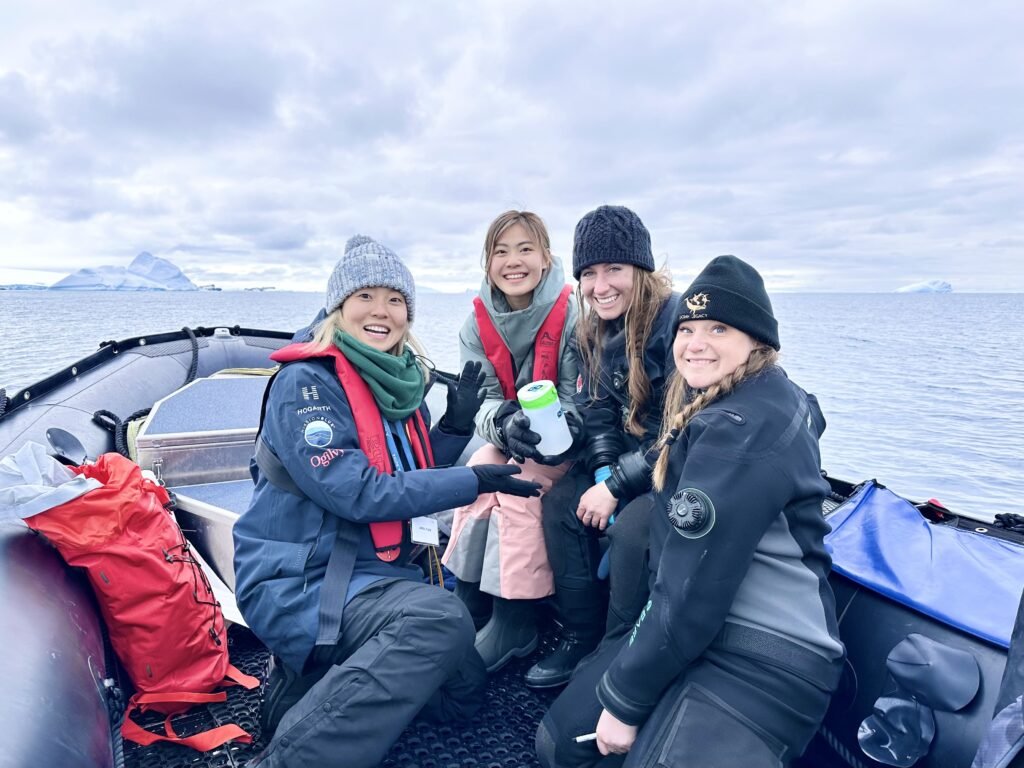
Apart from microplastic, we also did some whale research. I followed the whale zodiac with one whale scientist called Dr.Olaf. It was super exciting, he brought us on the zodiac and we went further from the ship to identify if there are any whales around and also observe their behavior. We also used a hydrophone which is like an underwater device that helps capture underwater noises and sound waves to listen to the whale. Although maybe sometimes we don’t see the whales swimming on the surface, after we analyzed the sounds, we realized that there are several whales in the area that we explored. By aggregating these different data points, we were able to map out how many whales we saw. And I think throughout the whole expedition, there was a sighting of around 100 whales. Also, we were using drones to take sensory images. Through the drone, it was very clear where the whales were because the water was very clear there. I think that’s another interesting observation.
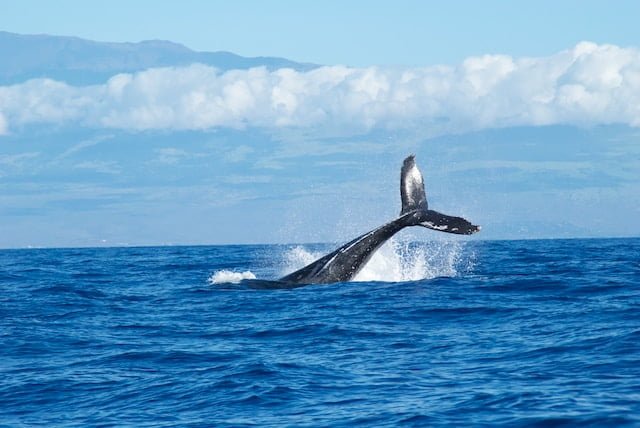
Personally, as I’m the only one from Hong Kong on that trip and I also want to raise my voice for Asia, I did personal interviews with different stakeholders, like one-on-one with Dr. Sylvia Earle, Dr. Olaf, the whale expert, and other renowned personalities like Hollywood star Christina Ochoa to ask them – why they came on this expedition and what they think about what people in Asia can also do to protect Antarctica. I think I’ll be publishing those as a YouTube series on my channel to spread the word.
Additionally, I’m also working with several museums in Hong Kong to see if we can showcase an exhibition to bring the impact of Antarctica closer to Asia focusing on, for example, some of the whale species there and how it leads to increasing the marine protected area of the world. One delightful piece of news is that the UN signed the high seas treaty to protect 30% of the oceans by 2030. This is a great target and also what we were demanding for.
So in the end, we screened down the list to eight specific resolutions on ocean conservation and climate protection.
What were your preparations like for this trip?
I think the main preparation was to actually identify the right partners to work with me on the impact and amplify the work afterward. Because as a sustainability advocate, I think I had mixed feelings because I didn’t want to go on a high-emissions expedition if I don’t have a clear purpose for going there. So I kind of tried to really understand my objective. I was invited by the organizer back in 2021, and I’ve been reflecting on whether it is useful for me or for my advocacy. And then after I was convinced that I could do something about it, I started to reach out to different partners, to see how we could co-create impact. After all, we want to bring it as a relevant topic, as a relevant issue that can generate enough media attention to raise public awareness. So that was the main part of the preparation for me.
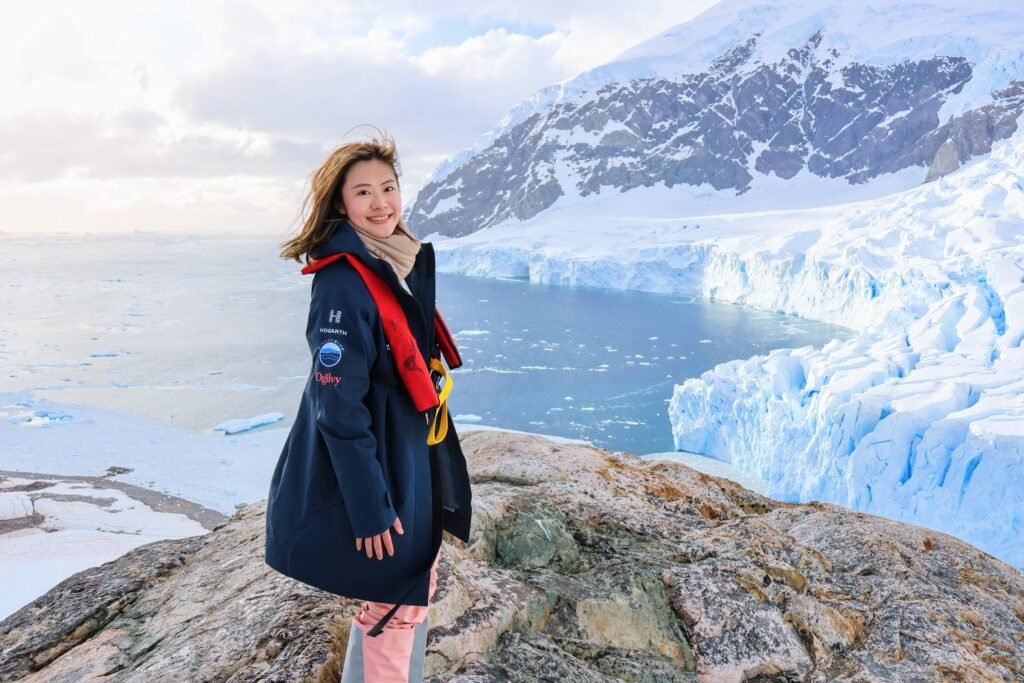
I guess the second part is to take time to research and understand Antarctica. I spoke with several of the experts from the trip before coming, to understand their objectives and whether we can collaborate on several initiatives. So one of the people I spoke with is James Barnes, he was part of the negotiation team for the Antarctic treaty. He’s a lawyer based in the US and now he’s living in France. So it was very interesting to learn more about the Antarctic Treaty, how important it is, and what we can do in the coming years to ensure that it’s being safeguarded because in the past few years, there have been more geopolitical conflicts. And some countries are kind of eyeing the Antarctic resources to do mining for minerals or deep sea mining. So, how do we keep up the public’s attention to scrutinize the implementation of the Antarctic treaty, and how is the treaty evolving, what countries are cooperating or are not – I understood it from James.
What was it like sailing to the Arctic? Did you get to see climate change firsthand in the Arctic?
Sailing to the Antarctic was I guess it was quite difficult for someone because we needed to pass through the Drake Passage which is one of the most unstable and dangerous passages in the world. The waves can go up to 10 meters in the worst kind of weather. Although we weren’t experiencing that, still it was quite shaky and it was for over two days. Some people were super seasick and they were not even able to join the other activities. But luckily I survived, as I had this patch under my ear to stabilize myself, and that worked well for me.
Witnessing the impact firsthand was a unique experience for me. I think, in particular, it’s the temperature. I figured that I didn’t realize this because I felt the temperature was kind of bearable, and I was okay with not wearing so many heavy clothes when I went outdoors. But once I got back, I shared some photos with my friends and they were like, “Oh wow. Is this hotter than it should be?” And I realized what it looks like. My parents were like, “Oh, from your photos, I bet it’s not that cold!” And indeed, it wasn’t super cold. I think, one of the days it was even like six degrees Celsius which was one of the highest, and 2022 is one of the hottest years in Antarctica over the past 50 years. So, it was shocking for me to see how warm Antarctica has become. Some of the expedition members who had been there around 20 years ago, witnessed the changing of the ice. We also saw a lot of green algae on the ice, so those are Antarctic algae. The reason for these algae to bloom is because of the warming temperature that also affects the habitats of penguins and other species. So it’s also another abnormal thing that we saw. In terms of the wind, there are also more frequent intense storms that gust extreme weather than before, which was unfavorable for penguins’ survival. Also, I think we weren’t able to see a lot of Ice cover, I guess it was partly because of the rapid rate of melting. So my perception is that it didn’t feel like I was in Antarctica, I felt like I was in another rocky mountain which is not ideal.

I also did a bit of snorkeling. So I got to get relatively closer to the wildlife to observe the behavior. I personally didn’t see a lot of behavioral changes, but our expedition guys mentioned to us how the penguin colonies are changing a lot. Like they used to see a lot of penguins in this colony, but this time we did the landing there and there were only a few left. so their habitats are changing quicker than we can predict. And it’s worrying and disheartening for us on the ship. But I guess what also struck us was how beautiful Antarctica can be with the other changes in landscape and scenery. The majority of it is still very beautiful and well-preserved. This is how we think Antarctica is might impact how we see the ocean in general and what can be done to revive the oceans if we’re able to implement, for example, the UN high seas treaty was able to protect the whole of the high sea, ban deep sea mining and establish as many actions as possible to cover the rest of the oceans.
Because Antarctica is like the Global Commons, and everyone can get a part of it. Countries can come together to sign such a treaty, like the Antarctic treaty to protect this place with us. We can use this as a positive case study to see what our land could look like without human intervention and what kind of similar mechanisms can be applied to the rest of the oceans.
Tell us about the goals that you were supposed to finalize during the expedition.
We had initially planned on 23 goals, which later became 8 goals. I think after the discussions, we realized that in order to communicate messages effectively, we need to be more focused. So instead of having the headline of 23 solutions, it was more like 8 generic broader umbrellas. And under each of the eight umbrellas, we have two to three action points.
One of the resolutions is to protect and implement a treaty and climate-smart approach to protecting marine resources, which is related to the goal of 30 by 30, i.e. 30% of the ocean protected by 2030, demanding for that to happen. And then another resolution was to demand fossil fuel-free oceans to prevent the extraction in the oceans because obviously, there are still a lot of Mining and extraction activities happening related to fossil fuels in the ocean. So, generically, we agreed on doing that. Another resolution is embracing a full and comprehensive circular economy at all scales and levels which includes resources like plastic and other materials that are extracted from or abandoned in the ocean.
I think we had around 17 members that were youth representatives in the expedition. So, for the youth part, our resolution is to promote an inclusive culture and to support them to become climate and ocean leaders. The last thing is including and respecting the voices of different cultures, including the indigenous communities. A lot of indigenous communities rely on fishing and aquaculture as their livelihood for survival and their major source of protein. So, learning from how indigenous people are operating the smallholder fish farms would shed light on how we create smallholders’ sustainable scale fishery systems. Because we are championing against industrial fishing due to the impact that it creates on ecosystems, essentially wiping out the whole marine ecosystem. So it’s crucial to learn from the traditional wisdom of indigenous people on how to manage and protect Marine Resources.
What was it like meeting Dr. Sylvia Earle personally and being a part of her expedition team?

Meeting Sylvia Earle was very inspiring, as cliche as it sounds. First of all, I really admire her passion and energy. Even though she’s quite old already, she is so energetic and she attended almost every lecture. She’s even more energetic than all of us.
She not only attended my lecture, but she also really paid close attention and gave her feedback to me. And every time she makes a remark, it’s deeply thought through and involves her past experience aligned with the future. What I respect the most is that she doesn’t only talk about the past – while she does talk about it, she will link it back to a future outlook. I feel like she’s continually engaged with the latest research related to the ocean in order to keep herself most updated and she still has all these crazy ideas on what can be done in the future. And another point is about the idea of exploration. So she thinks that a major part of her talk on the ship is about her latest projects on the deep sea. She was the kind of the first generation of manufacturers of submarines to go as deep as 1000 meters, and she continues to do that. Because she thinks that going into the deep sea is like going to outer space as it’s so unexplored that we don’t realize how many species are out there and she discovers something new every time. She showed us some very strangely beautiful marine animals in the deep sea all lit up. It’s like a jungle down there.
She was very generous with her time. Even though she was super packed, she gave me like 20 minutes of her time for an interview, and the most memorable scene was when we were called for a concluding remark by her, which couldn’t have started without her presence. But she insisted on finishing the interview with me first before she went. And when the admin person came in to call her because they needed her, and saw that she was doing the interview with me, the person stared at me for holding her. (chuckles)
Her whole narrative of how we should keep exploring and keep understanding more and respecting the blue heart of our planet. And she’s also super optimistic, she always says that she believes now is the best chance for us to make a difference, and to transform all the tipping points into turning points. This was a quote that I kept close to my mind and heart because I believe that there’s still a chance of creating the change that we need. And I think her optimism lit up a lot of us to continue pursuing climate and ocean advocacy.

What was it like being surrounded by so many renowned people in the field like Jenifer Hayes and David Doubilet? What did you learn from this experience?
Yes, we did meet some other really cool people. Jen Hayes and David Doubilet were like the stars of the expedition. David actually took a photo for us and it was like a big deal because we were under David’s camera which is such a great pleasure. I think Jen and David shared a very personal story with us about their journey featuring harp seals in the Arctic. So they started to kind of understand the harp seals 10 years ago and they realized how they are being threatened by rising sea levels and warming seawater. So they kept following this story for 10 years. They go there twice a year to witness the breeding because each of the harp seals can only breed 1 to 2 times and then in the end, maybe all of them die. So, in recent years, almost all of the babies couldn’t survive because of the very bad weather conditions and extreme weather events. So it’s very disheartening for them.
I appreciate how they told this story by sharing their authentic experiences and how they fought for the funding to get this story covered. And now it’s been elevated on National Geographic. While they work for Nat Geo, they need to continually keep hunting for juicy stories as they work on contracts. So even though this Harp seal issue wasn’t very prominent 10 years ago, they persistently pushed it as a top issue and now it’s become elevated. This has taught me how to stay focused on a particular subject matter and use my creativity to frame a story in a way that is appealing to the audience and to institutions so that it can gather more effort to fight for a certain subject.
Meeting other people, I guess, I got exposed to different ways of life. So there are some people who are explorers; they just keep on going on different kinds of expeditions. I met a lot of people from the Explorers Club and it was eye-opening to see how to join the Explorers Club, you need to make sure that your expedition experience can contribute positively to the advancement of science, humanity, and the environment. There was Josh Bernstein. He is a storyteller. He used to go to all these unexplored places to discover new history or mysteries of myths, archaeology, and human nature. And now he’s working with NASA on communicating science to students like space science, and small stem experiments. So I can see how this can be involved with the agenda.
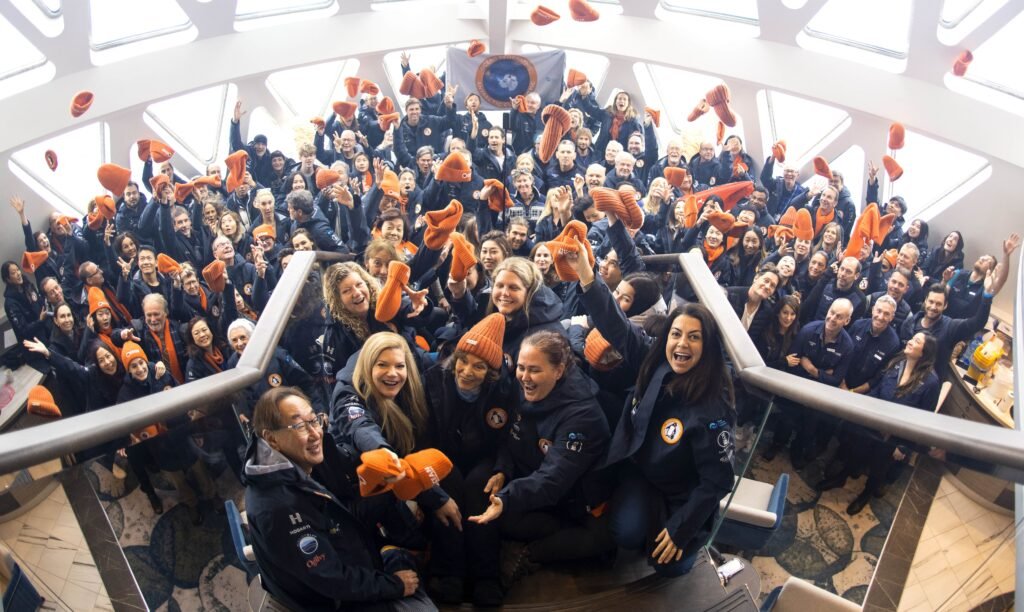
And there are a lot of people working in the film industry, like documentary filmmakers, this guy called Craig Leeson. I knew him already in Hong Kong because he worked in Hong Kong for like 20 plus years and they made a documentary called The Last Glaciers. I watched it when it was premiering in Hong Kong and I was very glad to meet him again on the expedition. He talked about tackling greenwashing and his hopes to use documentaries as a force of change. I really respect his work and I thought maybe this is something that I can do in the future because I think being a documentary filmmaker, you’re really an agent of telling a story to a wider audience. He was also involved in the making of A Plastic Ocean. And he mentioned how after making this movie about plastic pollution, he really understood a lot more about microplastic from all the stakeholders that he interviewed and how much plastic we’re consuming from eating seafood. So, after this documentary, he actually completely stopped eating seafood.
All in all, I realized there are lots of possibilities for advocacy. Currently, I’m focusing more on the education policy side, but I also see a lot of potential in collaborating with these people and exploring multimedia and multi-disciplinary fields to enable change to happen in a quicker manner.
What are your key takeaways as the Key Opinion Ambassador of the expedition?
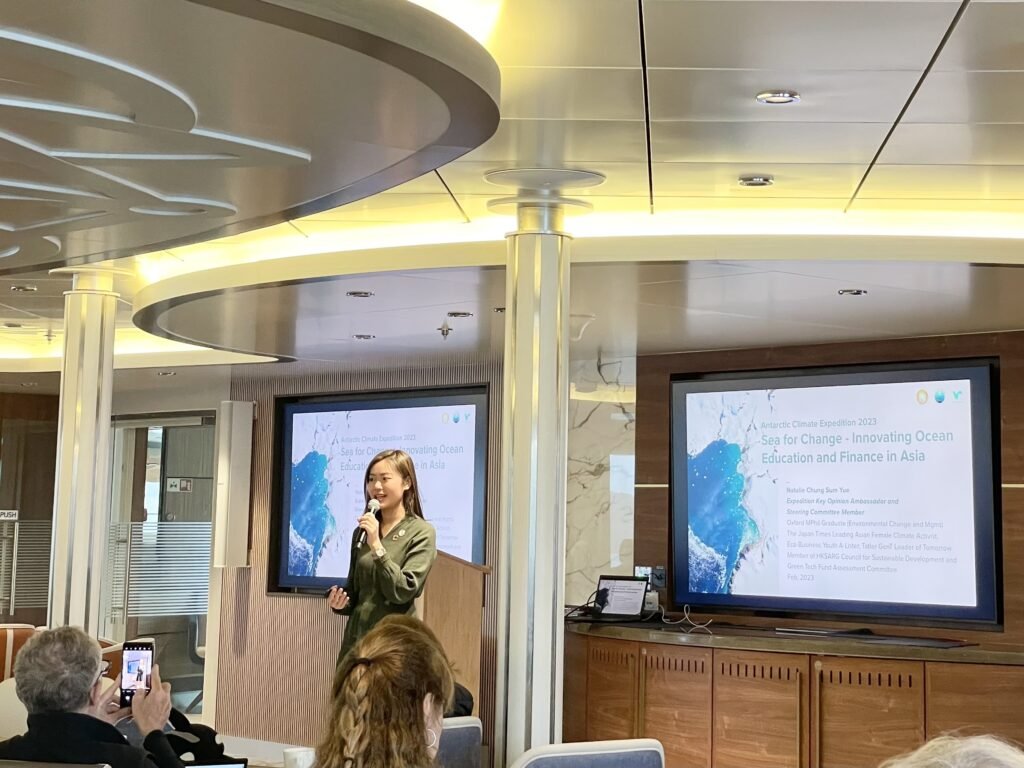
It fills me with both disappointment and hope. The fear comes from how rapidly these environmental changes are happening right in front of me. And I fear that continuous exploitation and the spreading of things like tourism culture and exploitative consumerism is encroaching into Antarctica quicker than I’ve imagined.
So while our ship was still like a typical cruise ship, even though we ensured all the operations were as low carbon as possible, we had buffet meals every day which was definitely not good because of all the food waste that we were creating. Of course, they get disposed of properly, but it’s just that the culture of cruising is so deeply rooted in a way that we can imagine Antarctic tourism to be one thing but it should be something more impactful, something more authentic and genuine. So that is the fear.
I was overwhelmed with a thought during and after the expedition, like, how much impact have we created? How much footprint? How do we actually offset it or can we really offset these events? And I feel like it’s also irreversible or hard, given the microplastic that we’re seeing falling from the clothes that we wear. And then in terms of hope, I think it filled me with hope, seeing how hundreds of people can come together to discuss resolutions that are meaningful to the planet and everyone is working so hard in their respective disciplines to add funds to change and to advocate for their own communities. And I wish that we can continue working together as a coalition, as a platform to drive further changes.
I also think that youth have an important role to play to disrupt power hierarchies and to really use movement to transform our society. And I think also like a constant reminder for myself, is that when I get into a position of power, I should always keep this euphemism, this genuine and authentic solid mindset. Instead of just trying to stabilize my own power, I should decentralize my power to everyone so that we can listen to the most effective solutions that come from the communities, from the grassroots.
How do you plan to further implement the high-level goals from the expedition?
I think I will focus on the first and last goals. The first goal is to protect marine resources. Because we are championing 30 percent of marine parks by 2030, and in Hong Kong, currently less than 5% of the oceans are protected as marine protected areas. So I think there’s a large gap and what we can definitely do within our own communities is to raise awareness and I’ll be joining the Marine Protection Alliance in Hong Kong with the other experts to use my expedition knowledge to add to their research work.
Another exciting project that I wish to share is that I am currently advising a fund, it’s a global asset management company based in Shanghai, China. It is an Impact Venture Capital fund. We’re hoping to invest in ocean-related startups and technologies to help them scale their businesses. And our focus will be on Asia because we see that there are some ocean funds focused in Europe and the US but actually, over 80% of the fishing population is based in Asia. So I think there’s a huge gap in some simple solutions, like mangrove restoration and enhancing fishing efficiency, so that we don’t have the problem of overfishing, destroying marine ecosystems, and improving ocean data analytics. So I’m now working with a team and we’re actually already talking to a bunch of startups. There are so many new technologies and spaces and we’re just like getting there. So we really hope to support the early-stage ventures to help them scale up. So this is an exciting project that we’re working on, and obviously, feeding into that target of protecting marine resources.

Find Natalie and learn more about her here.
This is part of a series where Green & Beyond explores the stories and takes a peek at the lifestyles of incredible people like green entrepreneurs, innovators, climate advocates, activists, community leaders, and content creators, all around the world, who love the planet and are working tirelessly to make the world a better place.
